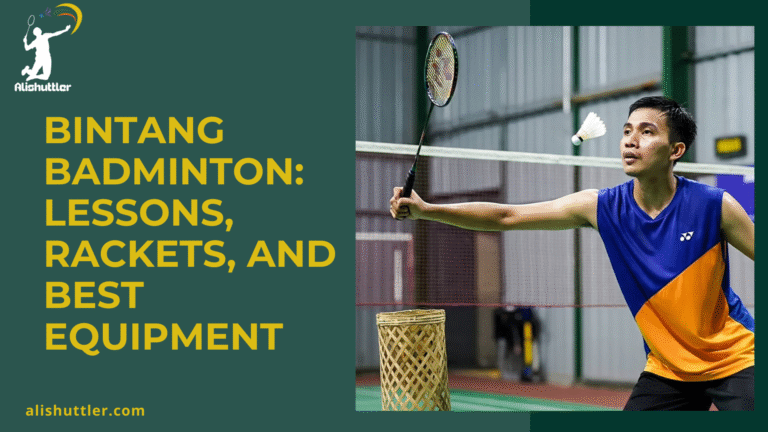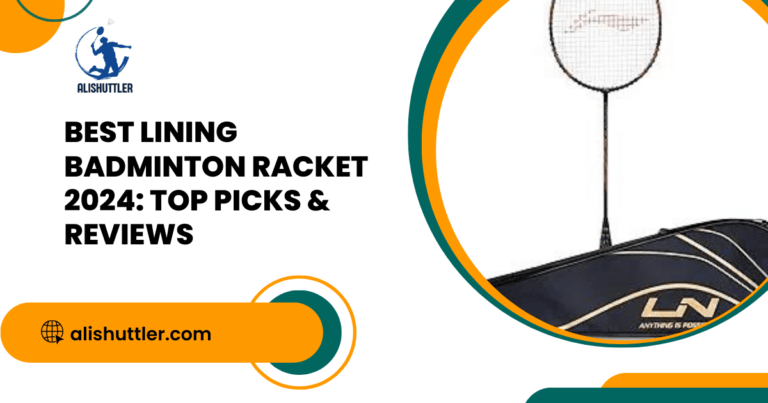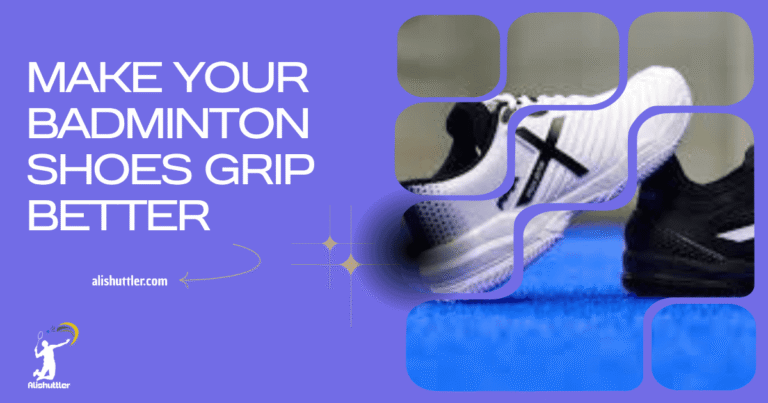Equipment in badminton refers to the tools utilized during play, including rackets, shuttlecocks, shoes, and nets. All of them with a defined position in the game, be it speed-shaped rackets or flight-made shuttlecocks.
Proper shoes assist in quick maneuvers, and nets establish boundaries for the game. Knowing what each does helps you choose well and play safe.
The following segment introduces each kind, with advice for selecting what suits you.
The Core Gear
Badminton requires only a minimal amount of badminton equipment. Each item has to fulfill certain requirements to maintain fair and safe matches, whether for casual games or prestigious badminton championships.
- Racket: This is the most critical gear. Players select rackets according to skill, style, and comfort.
- Shuttlecock: These come in feathered or synthetic types, each suited for different play settings.
- Net: A proper net is key for any match, with strict rules about size and height.
- Court: The court layout, markings, and surface all affect how the game is played.
1. Racquet
A badminton racket can alter your play. They have beginner, intermediate, and advanced rackets—all providing distinct advantages. Certain rackets are designed for power, whereas others emphasize control or speed.
For rookies, affordable rackets prevent breakage expenses and offer space to blossom. The racket must comply with BWF regulations. The total length can’t exceed 680 mm, and the width cannot be more than 230 mm.
The frame may be isometric (square, now more widespread since the 1990s) or oval. Isometric heads provide a bigger sweet spot. Mass counts. Most rackets weigh 80–95 g (unstrung).
Lighter rackets enable quick swings, but the optimal weight is what feels right for you. Beginners should begin with rackets strung to 19–20 lbs of tension, with advanced players moving to over 25 lbs. More tension is not necessarily better—it just requires more finesse to employ.
2. Shuttlecock
Shuttlecocks can be feathered, typically with goose or duck feathers, or synthetic, utilizing nylon. Feathered shuttles are the norm in competition play since they fly with more precision and velocity.
Synthetic shuttles are more durable and great for practice or recreational play. BWF specifies that the shuttlecock should weigh 4.74–5.50 g. This tight margin helps keep the play level and equitable.
If you play for fun, plastic shuttles are cheaper and don’t snap as quickly. For games, birdies are typically needed. This will impact the flight and speed of the shuttlecock depending on what type you play with.
Feathered birdies fall swifter. Synthetic shuttles are slower and have more forgiveness.
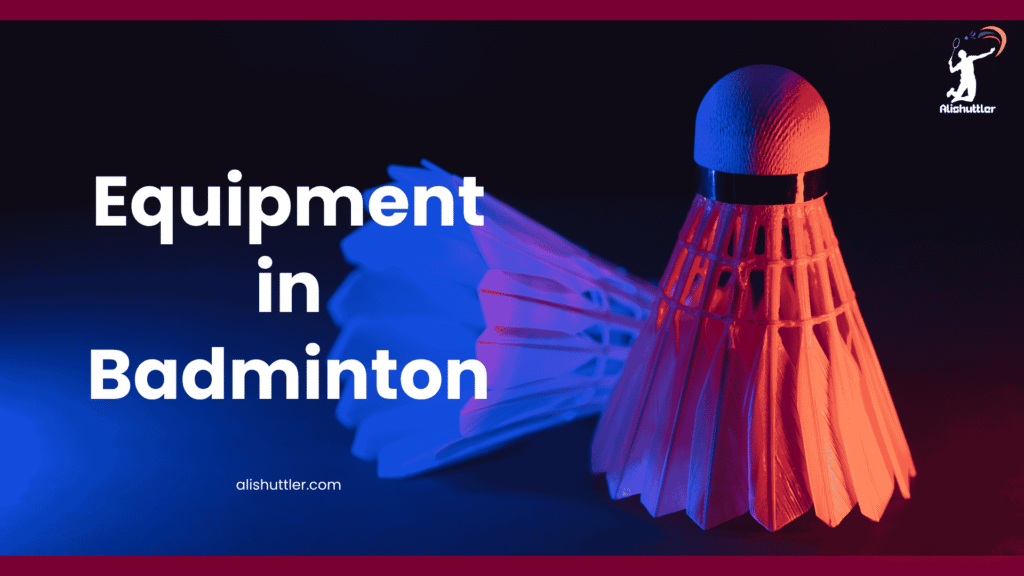
3. Net
The net separates the two halves and determines the height of each volley. It must be 1.55 m at the edges and 1.524 m in the center, as established by the BWF. The net is hung across the width of the court, so each side is even.
Casual games can use portable nets, which are easy to erect. For competitive play, stationary nets reign supreme. An appropriate net is a must for fair play.
4. Court
A typical court measures 13.4 m in length and 5.18 m in width for singles matches and 6.1 m in width for doubles. The lines demarcate service and play areas. The court lines have to be visible.
Courts may be wood, rubber, or synthetic. Rubber is prevalent due to its safety and injury-preventative nature. Clean courts are essential for good grip and safe movement.
A well-kept court means better play.
Player Attire
What badminton players wear defines not only their motion but their performance. The right clothes and shoes keep players quick, safe, and comfortable on court. Apparel has an impact on how the body manages sweat, heat, and rapid direction changes.
Below are key reasons why proper attire is important:
- Helps players move freely and fast
- Reduces the risk of slips, falls, and sprains
- Keeps sweat away from the skin
- Protects court surfaces
- Prevents injuries by offering support
- Supports better focus during demanding rallies
. Footwear
Badminton shoes are essential badminton gear that go beyond comfort; they ensure safety, grip, and speed on the court. Specifically designed for quick footwork and sudden direction changes, these shoes feature low soles that keep the foot closer to the ground, thus reducing the risk of ankle sprains. Non-marking soles are a necessity for indoor courts to prevent scuff marks and damage to the playing surface, making them crucial for competitive players.
Unlike running shoes or trainers, which often come with chunky heels and less traction for lateral moves, top badminton shoes provide an optimal combination of traction, cushioning, and support around the heel and ankle. Many brands manufacture badminton shoes with mesh uppers to help the feet breathe during extended matches. Additionally, good socks are as important as the right equipment, as they soften the feet and help prevent blisters during intense play.
In summary, investing in the right badminton shoes is key for any player looking to enhance their performance and reduce injury risks. With the right badminton equipment, players can focus on their technique and agility, ensuring they are well-prepared for competitive tournaments.
Apparel
Badminton shirts and shorts have to be light, flexible, and airy. Baggy or constricting clothes can drag a player down or impede movement. Opt for moisture-wicking fabrics, such as polyester blends or specialized sports fibers.
These fabrics assist in keeping the skin dry and cool, which is key for concentration and comfort. Skirts are a favorite of a lot of female players because they’re flowy and effortless to move around in.
Whether your gear should be styled in a certain way or color is up to you–some players dig bold colors, others go with classic white or black. What’s most important is how the clothes fit. They should flow with the body and not bunch or ride up during play.
A nice fit can go a long way in helping you play your best. Lots of players, particularly women, opt for a sports bra for support during rallies. Accessories, such as wrist or head bands, can assist with sweat management, but need to be practical first and foremost.
Accessories
Badminton socks aren’t just an afterthought– they’re crucial for both comfort and injury prevention. Seek out socks that have additional padding at the heel and ball of the foot. This minor add-on prevents blisters and maintains foot stability in the shoe.
Bonus gear, from sweatbands to grip-enhancing gloves, is rife but should be selected for utility first. Most importantly, keep it simple. Jewelry is best left off the court. It can catch or distract while playing.
Glasses or sports goggles are recommended for the vision-impaired or those who desire eye protection.
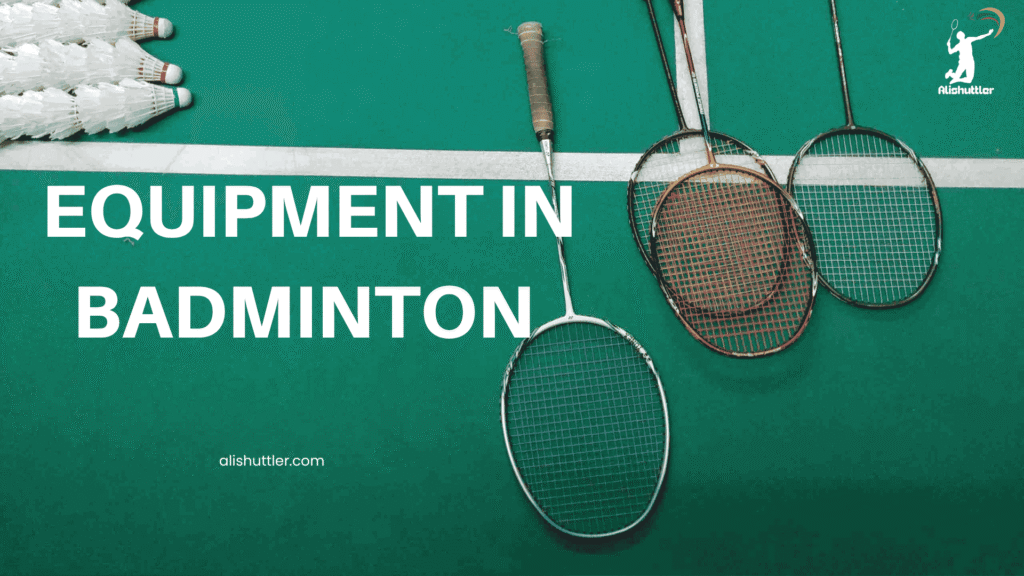
Racquet Deep Dive
Equipment in badminton rackets has evolved substantially, transitioning from dense wooden frames to contemporary graphite and carbon fiber designs. The right badminton equipment, including a lightweight frame and proper string tensions, significantly impacts how a racket feels and plays. These components are crucial for competitive players at every level, influencing swing speed, power generation, and stroke control.
Weight
Superlight rackets, usually 75-85 grams, are great for quick swings and faster reactions, making them a good pick for speed lovers or doubles players. Heavy rackets, usually above 90 grams, pack more punch behind smashes but can bog down swift volleys at the net.
The best racket weight is one that’s by your strength/style – light for quick playing, heavy for big hitters. For new players or those with weaker arms, a lighter racket is typically more manageable and less taxing. More advanced or power-oriented players may gravitate toward heavier rackets to smash shuttles deep into the court.
Be sure to experiment with different weights to find what feels right–comfort is king in those long matches!
Balance
Badminton rackets come in three main balance types: head-heavy, head-light, and even balance. Head-heavy rackets allocate more mass toward the racket’s tip, providing additional power for clears and smashes.
Head-light rackets, with more weight toward the handle, allow you to swing the racket quickly a benefit for rapid defense or volleying. Even balance rackets attempt to provide a little of each, so they’re popular among all-around players.
Which one works best depends on your game plan. Aggressive, attacking players might go with a P head-heavy for power. Defensive or control-oriented players tend to prefer head-light rackets. Testing different balances will help you discover what complements your power and feels natural in your hand.
Flexibility
PPracket shafts range from flexible to stiff. Flexible rackets whip more on impact, acting a bit like a spring to give an extra shot power boost. This is beneficial if you have a slower swing or desire more assistance in producing speed.
PStiff rackets don’t flex too much, so they provide you with more precision and control, particularly if you already have a quick, powerful swing. New players usually go for medium or flexible rackets, and experienced players tend to choose stiffer shafts for accuracy.
The feel of the racket counts as well some players enjoy the response of a rigid shaft, others the gentler caress of a pliable frame.
Strings
String tension influences everything in the Equipment in badminton about how a racket plays. High tension (above 11 kg) imparts more control and sharp shot response, only if you possess a strong, accurate strike.
Lower tension (under 10kg) gives you a bigger sweet spot, assisting you with power and forgiveness on off-center blows. String material makes a difference too: synthetic gut, multifilament, or natural gut each offers various blends of durability and feel.
Patterning assists control and is more durable, whereas open patterns increase power and spin. Switch out your strings regularly to keep performance lean, as dulled or loose strings can dull your shots.
Shuttlecock Science
Shuttlecocks, of course, are essential Equipment in badminton gear; their unique construction and flight define each bout. Three primary varieties, feathered, nylon, and hybrid, are utilized around the globe. Each has its characteristics, benefits, and circumstances, which are crucial for competitive players.
| Type | Material | Durability | Flight Pattern | Cost | Best Use |
|---|---|---|---|---|---|
| Feather | Goose/Duck Feathers | Low | Precise, Natural | High | Competitive/Professional |
| Synthetic (Nylon) | Nylon/Plastic | High | Consistent, Linear | Low | Recreational/Training |
| Hybrid | Mix of Feather & Nylon | Moderate | Balanced | Moderate | Versatile/Club Play |
Feather
Feather shuttlecocks, constructed with sixteen goose or duck feathers, are the preferred option for professional and elite-level matches. Their lightness enables players to manipulate speed, spin, and drop shots with greater dexterity, making them an essential part of the Equipment in badminton gear. The cork base and overlapping feathers render their flight steadier and more reliable, particularly at high velocities, which is crucial in competitive tournaments on Equipment in badminton.
Feathers allow shuttles to decelerate rapidly following a smash, thereby enhancing the skill element of rallies in the shuttlecock game. To create a feather shuttlecock, artisans insert feathers into a cork base, then cement and bind them. Just like real birds, only matched feathers from one wing are used for balance and even spin.
The process is laborious, but it provides superior flight and feel to other varieties of Equipment in badminton. Because of the skirt gaps, drag is increased and assists with the shuttle’s signature ‘dip’ in flight, crucial for competitive players. Performance holds, but feathers are fragile and can snap or fray after quick play or consecutive smashes.
Drag increases and the shuttle slows in cold weather, while warm air powers lift and speed. Care is essential. Keep feather shuttles at room temperature and away from direct sunlight. Some players employ humidifiers to prevent feathers from drying, which aids their durability and ensures they are ready for the next competition.
Synthetic
Synthetic shuttlecocks, known as nylon shuttles, are designed for regular players and clubs. They’re hardier and do well in drills or extended rallies. Nylon skirts and rubber bases ensure they aren’t breaking as easily and can be used multiple times.
These shuttles are cheaper and more durable. Equipment in badminton makes it popular among schools, parks, and beginners. Their flight is more direct and less airy, but they don’t ‘drop’ quite as sharply as feathers. For some, this equates to less authenticity, but to others, it equates to fewer shuttles lost to wear.
Synthetic shuttles are great where price matters, or when players need identical flights every time. In damp or chilly environments, they likewise endure longer than feathers.
Flight Dynamics
PFeather shuttles have a turbulent flight because of drag and lift forces. The aerodynamic shape and layout of the skirt decelerate the shuttle immediately after a hard strike, keeping the sport both high-speed and equitable. The shuttlecock is most stable and strikes hardest when it flies with zero angle of attack, straight in line.
Synthetic shuttles are straighter and less susceptible to shifts in air. This translates into fewer surprises, but less “organic” play.
Choosing the Right Shuttlecock
Match type, player level, and cost all count. For prime matches, feathered shuttlecocks provide the best feel. Nylon or hybrid shuttles, ideal for practice or fun, are the best choice. The right Equipment in badminton can alter the game and challenge athletes’ abilities.
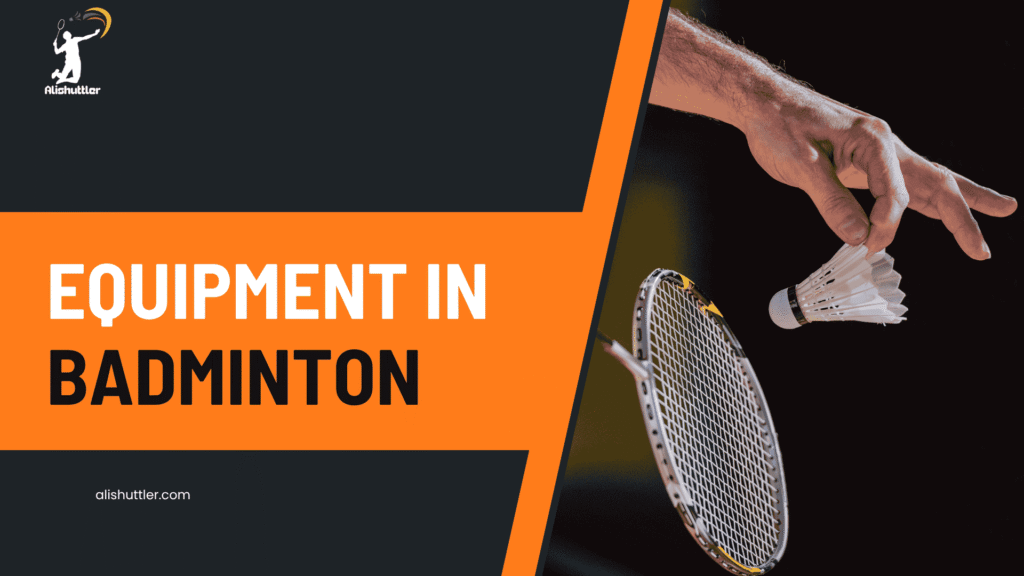
Beyond the Basics
Equipment in badminton is a quick, agile game derived from battledore and shuttlecock in British India. Its development, which saw its initial rules formalized in 1893, brought with it not only novel play styles but also equipment options as well. Players across the globe, from backyard legends in the U.S. to World-class athletes in China, Denmark, and Indonesia, depend on more than rackets and shuttlecocks to stay sharp.
Useful accessories can offer more control, comfort, and protection on and off the court:
- Sweat-absorbing wristbands and headbands
- High-friction towel grips for better racket hold.
- Equipment in badminton tracker devices for performance data
- Protective eyewear for safety
- Quality socks and shoes for foot support
- Overgrips and replacement grips
- A dedicated badminton bag for gear
Grips
A good grip is essential for control in a sport where the shuttlecock flies at speeds of 426 km/h, as demonstrated in Mads Pieler Kolding’s record-shattering feat. Selecting the right Equipment in badminton, particularly the appropriate grip material, aids in wicking sweat and preventing the racket from sliding. Synthetic grip, towel grip, and leather wrap each offer distinct feels and moisture management.
Grip size is crucial. Too thick, and your hand aches; too thin, and you risk dropping balls, especially in fast-paced exchanges during competitive tournaments. Replacement grips keep badminton rackets smelling fresh and are easy to replace, ensuring a uniform feel that can significantly impact your play, even if you don’t realize your grips are worn.
Some competitive players stack overgrips for minor thickness customizations, tailoring the Equipment in badminton gear to their hand and style. These minor adjustments in grip can greatly enhance both comfort and performance on the court.
Bags
A good Equipment badminton organizes all your badminton equipment and protects it from harsh elements. With ceilings that have no minimum height in the Laws of Badminton, you’ll find yourself in all kinds of facilities. A dependable bag comes in handy for secure, portable storage of essential badminton gear.
Backpacks and duffle bags are everywhere, each providing alternative methods to transport Equipment in badminton rackets, shoes, shuttles, and accessories. Backpacks are comfortable and snug for commuters, whereas duffels generally have more space for additional equipment like ankle guards and grip powder.
Nice bags come with padded racket areas, shoe pockets, and zip compartments for little necessities. Padding protects your shins from bumps, while extra pockets keep tangled gear away, ensuring you can focus on your technique during the game.
Accessories
- Badminton tracker: Worn on the wrist or racket, these devices track swing speed, shot count, and calories burned. Data assists players in identifying patterns and gaining proficiency.
- Wristbands and headbands: These absorb sweat, keeping hands and eyes dry. Key in extended matches or hot weather.
- Towel grips: Made from absorbent cloth, they offer a non-slip surface even as hands sweat. A favorite of tournament players.
- Protective eyewear: Used by players concerned about eye injuries from fast-moving shuttles.
- Socks: Thick, cushioned socks help prevent blisters and offer extra support.
Good accessories don’t just make you more comfortable, they keep minor annoyances from becoming major distractions. On the flip side, investing in good grips, socks, and tracking tools can support your game, whether you play Equipment in badminton for fun or to win tournaments.
Gear Personalization
Customizing the badminton equipment allows players to express their personality and tailor the sport to their requirements. From color selections to technical adjustments, there are a ton of ways to adapt each piece of Equipment in badminton gear to work harder for you.
Your Style
Custom gear can be as easy as selecting favorite colors or as daring as slapping flames on your racket strings. A lot of brands allow you to choose color combinations for shoes, shirts, and even the racket frame itself. Others take it a step further, sketching custom designs on their rackets or switching out the grip to neon green to coordinate with their shoes.
For the rebels out there, we’ve seen players embossing their rackets with 24K gold leaf or stapling superhero badges to the strings. Personalize the frame with decals, swap bumpers, or change grommets. Personal Equipment in badminton style can increase confidence on court, and some doubles teams even select matching gear to promote a more powerful team identity.
Your Budget
Budgeting keeps your spending in check, especially with so much gear available. Beginners can get really good rackets and shoes for less, often with less customization but great construction.
How to save money: Watch for seasonal sales or major brand promotions, particularly when new models roll out. While certain shops may have last year’s gear at a steep discount, off-brand accessories can still provide dependable style.
Concentrate your dollars on things that count, a pair of shoes that fit perfectly or a racket that feels right in your hand. You can add subtle personalizations such as colored grips or decals without spending a ton.
Your Level
Selecting equipment that corresponds to your ability ensures you maximize your experience. Newbies tend to thrive with lighter, forgiving rackets, and seasoned players might want to tweak things like shaft length, handle size, or string tension.
As players become more adept, they typically begin to tinker, introducing weighted grips, balancing with tungsten putty, or switching handle shapes to optimize control. Intermediate and advanced players can peel off the paint and respray their rackets, or even order custom specs from manufacturers.
Eventually, the right gear can help you go faster, but it’s hard to beat starting simple and evolving as your needs change.
Final Thoughts on Equipment in Badminton
Quality badminton equipment defines your game. The proper racket, grip, and shoes assist you in moving fast and hitting hard. The appropriate weight and build of a shuttlecock maintains the competitive balance. Little adjustments like grip wraps or string selection give you control. Even socks or wristbands can cut down on slips and sweat. Every piece, even the little ones, counts.
Tweaking your setup can open new avenues to attack and extend your abilities. To keep your equipment in top condition, inspect it regularly and replace worn components. Need more from your equipment? Experiment with different configurations or inquire from other athletes what they prefer. Your best game begins with the right gear.
Frequently Asked Questions
What essential equipment is needed to play badminton?
To play badminton, essential badminton gear includes a racquet, shuttlecock, badminton shoes, net, and appropriate clothing, ensuring safety and enjoyment during the sport.
What makes a good badminton racquet?
A quality badminton racket is light, well-balanced, and suits your playing style, making it essential badminton gear. Beginners tend to prefer flexible racquets, while advanced players often opt for stiffer options for control and power.
Why is proper footwear important in badminton?
Good badminton shoes provide excellent grip and support, essential for avoiding injuries during quick movements and sudden direction changes on the court, making them crucial badminton gear.
What types of shuttlecocks are used in badminton?
There are two main types of shuttlecocks used in badminton: feathered and plastic. Feathered shuttlecocks provide improved flight but have a shorter lifespan, while synthetic badminton equipment is more resilient and great for competitive players who engage in frequent play.
How does clothing impact performance in badminton?
Lightweight, moisture-wicking badminton attire keeps you cool and allows for free movement. The right badminton gear ensures comfort and doesn’t hinder your agility on the court.
Can players personalize their badminton gear?
Yes, players could customize badminton racquets, including string tensions, grip thickness, and even the lightweight frame. This customization enhances comfort, boosts performance, and instills confidence on the court.
What additional gear can enhance the badminton experience?
Wristbands, grips, and badminton gear like racquet bags are just some of the essential badminton equipment that provide extra comfort and convenience, making playing the sport more enjoyable!

